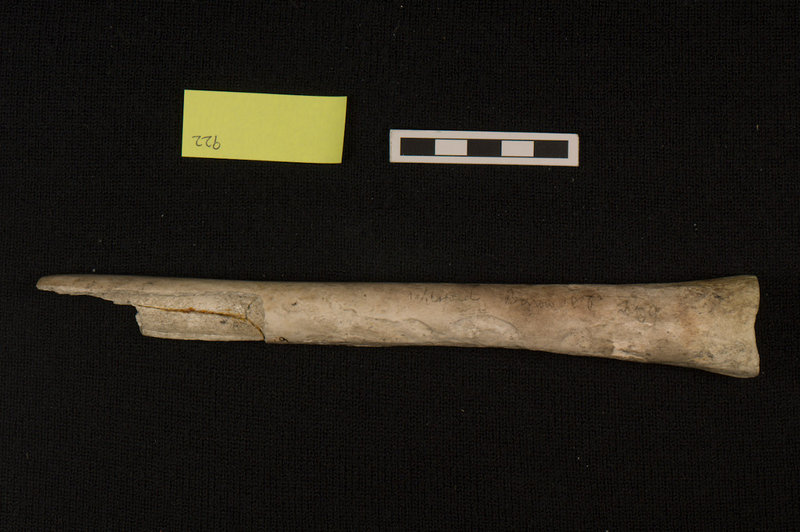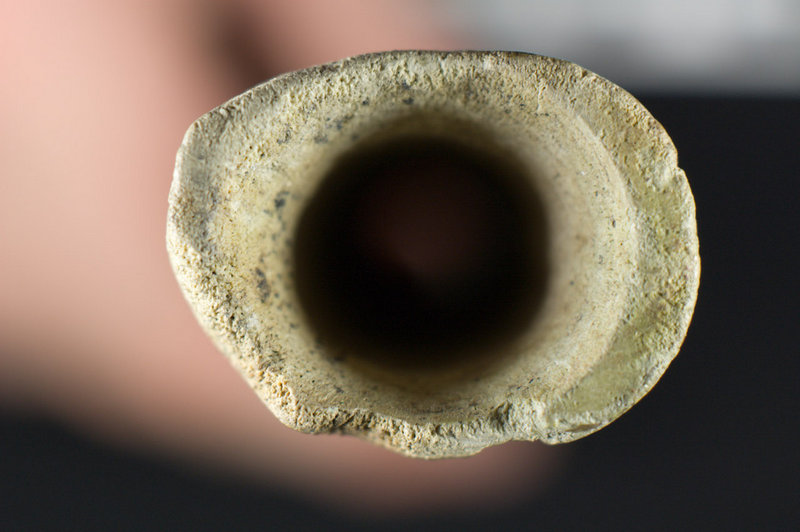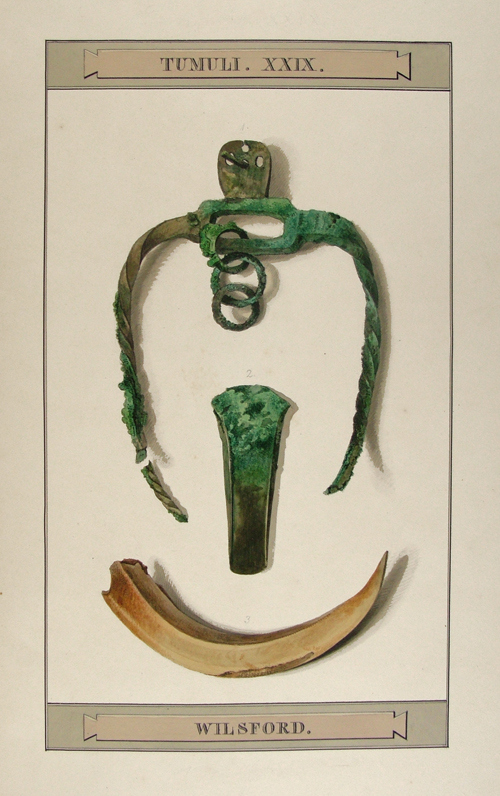A human thigh bone, crafted into a musical instrument. Found with a male Bronze Age burial at Wilsford, close to Stonehenge. Radiocarbon dating of this musical instrument suggests that it belonged to someone this person knew during their lifetime
The end of the femur was carefully worked to make it into the mouthpiece of a horn or trumpet and a side hole was made at the damaged end, but this is no longer visible. There is also ancient damage showing that it was extensively used. The tube has been carefully finished with a high polish on the surface, suggesting that it was a valuable and highly prized item.
It was found with a male inhumation in Bell Barrow Wilsford G58, excavated by William Cunnington in the early years of the 19th century. The other grave goods found inside the barrow include a battle-axe, bronze flanged axe, a unique pronged object, a bone plate, an antler handle, a tusk and a grooved stone.
Video: This video outlines the story of the burial and of the latest research carried out, including a radio-carbon date for this fascinatng burial.
Research: The Power of Relics: Curating Human Bone in the British Bronze Age – Dr Joanna Bruck and Dr Thomas Booth, University of Bristol 2017
The project investigated evidence for the curation of ‘relics’ - pieces of human bone that were deliberately retained over long periods of time in the British Bronze Age. It is widely recognised that Bronze Age artefacts such as jet beads and ceramic vessels were kept and circulated as heirlooms over many generations. Evidence such as the occasional discovery of worked fragments of human bone suggests that human remains were treated in similar ways. This project employed a programme of radiocarbon dating to consider whether fragments human bone from particular settlements and burials are demonstrably earlier than their final depositional contexts. The possible social implications of these practices were explored, casting light on how memory, materiality and the body were drawn into the definition of social and political identities.
The Wilsford G58 musical instrument represents direct and unambiguous evidence for the curation, retention and transformation human remains by Bronze Age Britons. It looks as though the instrument was not in use for a great duration of time and came from a person that could have lived within living memory of the individual that was buried with it. This may also suggests that the instrument was most likely made specifically for the individual it accompanied. It doesn't seem to be some long-lived ancestral relic. This throws up some interesting questions about why people were only keeping these things over relatively short periods, possibly reflecting the individual passing out of memory. Summary written by Dr Booth (2017).
Radiocarbon dating: Radiocarbon dating normally requires a 0.5-1g bone sample. however, the Wilsford musical instrument is a unique artefact, so rather than cutting a piece of bone directly from one of the edges, the required volume of bone powder was drilled from inside the cavity. This approach minimised alterations to the instrument’s morphology, structural stability and aesthetics.
Report received in June 2017: 3380±29bp, which gives a calibrated date of 1745-1617 cal BC (95% confidence) or 1731-1636 cal BC (68% confidence).
Research:
- Ritual in Early Bronze Age Grave Goods – Ann Woodward and John Hunter, University of Birmingham, 2015. Description incorporated in caption above.
- Death is not the end: radiocarbon and histo-taphonomic evidence for the curation and excarnation of human remains in Bronze Age Britain, Antiquity, 2020.
Image copyrights: University of Birmingham / David Bukach and Wiltshire Museum. Contact hello@wiltshiremuseum.org.uk for licencing details.






